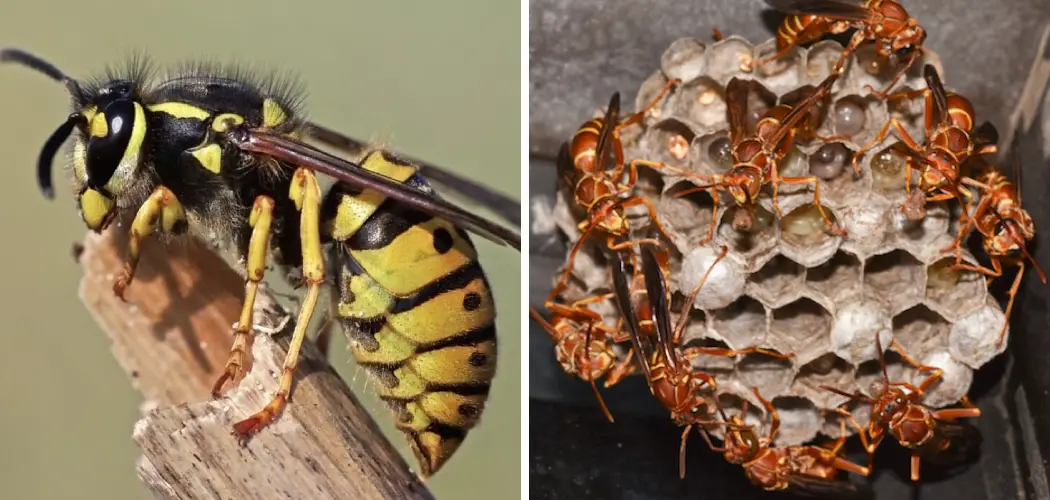Wasps can be dangerous pests if they are not managed correctly. They can cause serious health risks by stinging people and may damage your basement’s structure with their nests. Additionally, wasps can be a nuisance when flying inside or outside the house. It is important to eliminate wasps in your basement to maintain safety and keep your home free from pests.
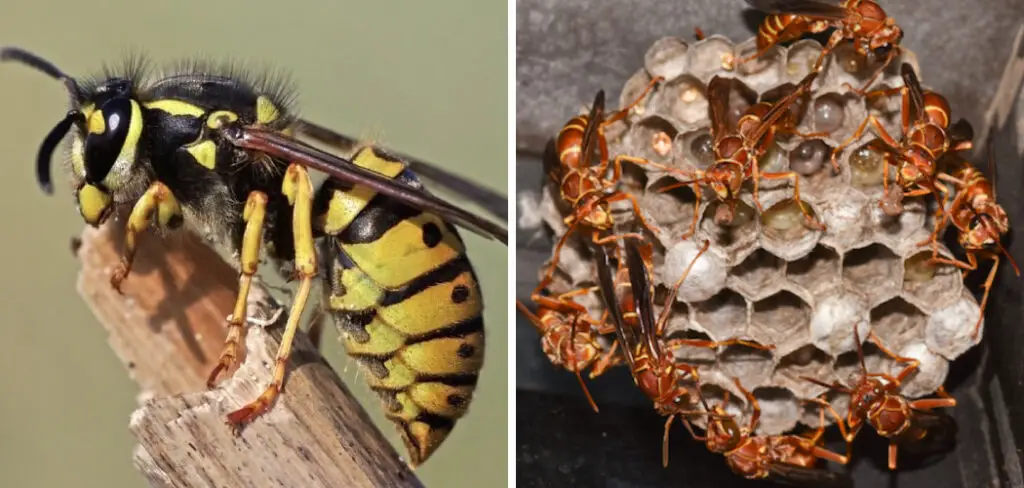
One of the main advantages of getting rid of wasps in a basement is that it will help to keep the entire home safe and protected. Wasps can be dangerous, as they are known to sting both humans and animals. Removing them from the basement helps ensure everyone in the household is safe from potential harm caused by wasps. You can find step-by-step instructions on how to get rid of wasps in basement in this blog article.
Step by Step Processes for How to Get Rid of Wasps in Basement
Step 1: Inspect the Basement
Before attempting to remove the wasps, it is important to look closer at the area. Check for any visible nests or entry points that the wasps may be used to access the basement. If there are holes or cracks in walls and ceilings, seal them with caulk.
Step 2: Remove Things That Attract Wasps
Wasps are attracted to sugary substances such as food and drinks. Ensure all food items, including pet food, are stored in air-tight containers. Keep the area clean and free of junk or debris. There are a variety of traps and repellents available that can help get rid of wasps in the basement. Sticky paper traps, aerosol sprays, and even electronic devices are all effective ways to rid your home of wasps.
Step 3: Use Poisonous Baits
Another way to eliminate wasps is to use toxic baits that contain insecticides or pyrethrins. These can be placed near the nests and entry points to kill the wasps. Wasps can enter the basement through small cracks and gaps between walls and ceilings. Scrutinize these areas and use sealant or caulk to close any openings that wasps could use as entry points.
Step 4: Remove Standing Water Sources
Wasps love to live in areas that have standing water. Remove any standing water sources in the basement, such as puddles or leaky pipes. Poorly ventilated basements can attract wasps and other pests. Improve ventilation by opening windows and using fans when possible.
Step 5: Seal Trash Bins
Wasps are attracted to the smell of food, so ensuring all trash bins are sealed properly is important. This will help prevent wasps from getting access to food and other sources of nutrition. Screen doors and windows can be used as an additional measure to keep wasps from entering the basement. Repair any existing screens with holes or tears so that wasps cannot access your home.
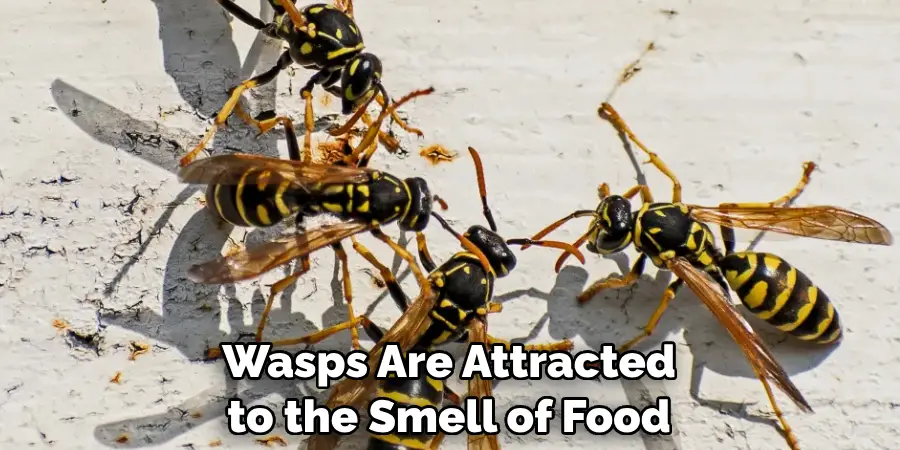
Step 6: Call a Professional Exterminator
If all else fails and the wasps are still present, it is time to call in a professional exterminator who can use specialized tools and techniques to remove the pests safely. They can assess the situation and determine the best action to remove the wasps.
However, if the infestation is too large or the wasps refuse to leave, it may be time to call a professional exterminator who can help eliminate the problem for good.
Tips for How to Get Rid of Wasps in Basement
- Wear protective clothing such as gloves, long-sleeved shirts, and trousers when dealing with wasps.
- Put on a face mask to avoid inhaling wasp venom when attempting to exterminate them.
- Place lights outside the basement that will attract insects away from the area and reduce the likelihood of wasps entering your home.
- Try to eliminate the food sources that attract wasps, like sugary drinks or fruits left out in the open.
- Make sure all windows and doors are closed to prevent wasps from entering your basement.
- Use a vacuum cleaner to suck up any existing wasps in the area and dispose of them outside your home.
- If necessary, contact a professional pest exterminator to take care of the wasp problem in your basement safely. They can provide the best advice and solutions for removing wasps from your home.
Following these tips can help you get rid of wasps in your basement quickly and safely.
What is the Best Way to Trap Wasps in a Basement?
One of the best and safest ways to get rid of wasps in a basement is to trap them. To do this, you must buy a wasp trap from your local hardware store or online. Ensure the trap is specifically designed for wasps so that it won’t attract other insects. Place the trap near where the wasps are gathering in your basement, and make sure that you check it regularly to see if it has caught any wasps. If it has, simply release them away from your home.
In some cases, this method may not be effective, or the wasps may return. In those cases, there are other methods you can use to get rid of wasps in a basement. For example, you can use a soapy water mixture to kill the wasps and their nests.
To do this, mix some liquid dish soap and warm water in a spray bottle and spray it directly onto the wasp nest. This will cause them to suffocate and die. You can also make an insecticide from orange or neem oil and water and spray it directly onto the wasps.
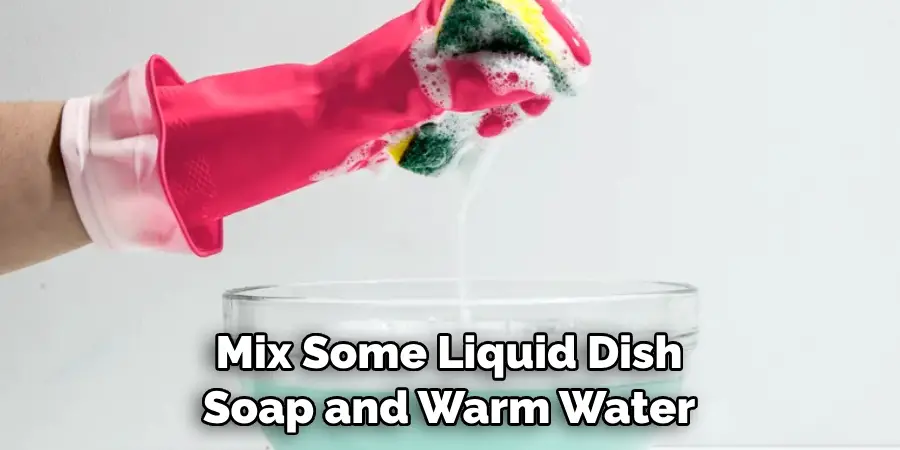
How Can You Identify the Type of Wasp Infesting Your Basement?
Before removing the wasps in your basement, it’s important to identify what type of wasp is causing the problem. Different types of wasps have different removal methods. Generally speaking, there are two categories of wasps: solitary and social. Solitary wasps include mud daubers, cicada killers, and digger wasps. These species of wasps live independently, so they do not form large nests or colonies in your basement as some social wasp species can.
Solitary wasps are typically more docile than their social counterparts but will still sting if provoked. Social wasps include yellow jackets and hornets. They may build hives or nests in your basement and, as the name implies, live in groups. These wasps are more aggressive than solitary wasps and can be dangerous if disturbed. It’s also important to note that social wasps will enter homes during colder months in search of shelter. Luckily, they won’t stay long once it warms up outside.
What Are the Best Ways to Clean Up Messes Left by Wasps in a Basement?
Once successfully removing the wasps, you must clean up any mess they may have left behind. One of the most important steps is removing any nests built in or around your basement. Do this carefully and gently, being careful not to agitate the wasps if there are still some lingering around. Once all nests have been removed, dealing with the mess that may remain is important. Wasps leave behind a lot of debris and droppings, so be sure to clean them up properly.
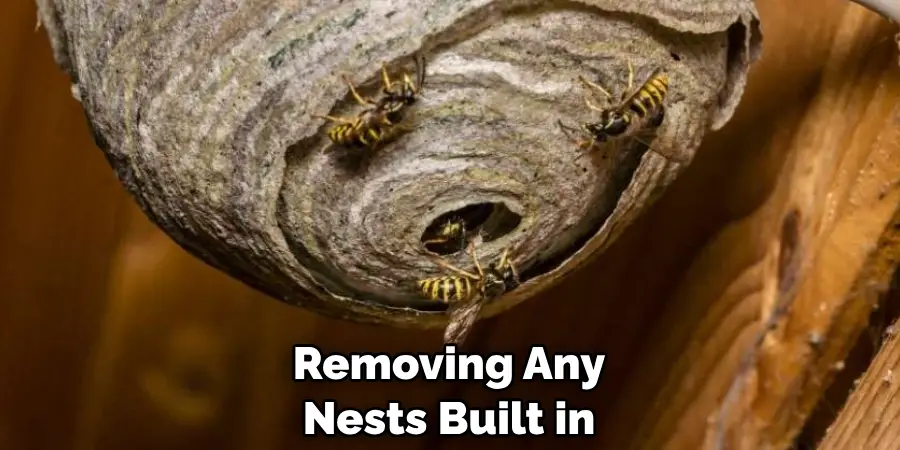
Vacuuming is one of the best ways to take care of this task: use a powerful vacuum cleaner with strong suction and get into all the nooks and crannies where wasps may have nested. Another way to clean up wasp-related messes is by using a hose attachment. With this, you can spray down the affected area and rinse away droppings and other debris that may be stuck to surfaces. This method works best for outdoor areas as it is less likely to disturb any remaining wasps or their nests.
What Can Be Done to Prevent Future Infestations of Wasps in a Basement?
Once you have successfully gotten rid of any wasps currently living in your basement, it is important to take action to prevent them from returning. Here are a few tips for preventing future infestations of wasps in the basement:
- Seal up cracks and holes in walls, windows, and doors where wasps can enter.
- Install a fan to keep air moving and discourage wasps from staying in your basement.
- Keep food covered or stored away so you don’t attract more wasps into the area.
- Regularly clean up any food debris, such as spilled juice, that may attract wasps to your basement.
- Avoid using pesticides or insecticides in the area, which can make wasps more aggressive.
With some simple steps, you can help to prevent future infestations of wasps in your basement and keep them away for good. Taking action now will save you from having to deal with a bigger problem down the line.
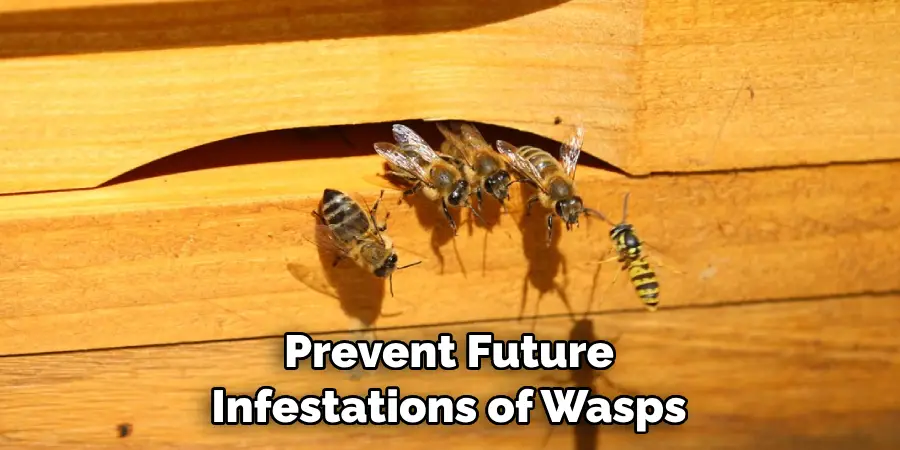
Conclusion
In conclusion, getting rid of wasps in the basement can be difficult. It requires careful planning, the right tools and materials, and patience. However, with the proper steps to identify and remove wasp nests, you can keep your basement safe from these unwelcome guests. With some diligence and effort, getting rid of wasps in your basement and preventing future infestations is possible.
By following the steps outlined in this blog, you should have a better idea of how to get rid of wasps in your basement. Remember to take all safety precautions and use the right methods for effective pest control. With these tips, you can keep your basement free of these pesky critters and enjoy peace of mind knowing that your home is safe from wasp invasions. This article has been beneficial for learning how to get rid of wasps in basement. Make Sure the preventive measures are followed chronologically.

